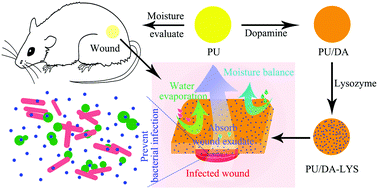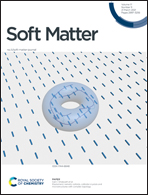A moisture balanced antibacterial dressing loaded with lysozyme possesses antibacterial activity and promotes wound healing
Abstract
Wound moisture management is very important in wound healing. Previous wound management has included dry healing and moist healing, and the theory of wound moisture balance is currently generally accepted. However, current studies have not reported which humidity is suitable for wound healing and how to appropriately use antibacterial compounds when the humidity is suitable. Our study explored the moisture balance of polyurethane foam dressings through a moisture balance test and constructed a safe and effective moisture balanced antibacterial dressing by loading lysozyme onto a polyurethane foam dressing. Wound healing experiments showed that the wound healing speed was the fastest when the humidity was 25%. In vivo and in vitro antibacterial experiments showed the superior antibacterial performance of the dressing after lysozyme loading. We loaded lysozyme on moisture balanced polyurethane dressings by means of dopamine adsorption, and the modified dressings were named PU/DA-LYS (polyurethane/dopamine-lysozyme). Experiments on wound healing in infected mice indicated that PU/DA-LYS helps fight infection while promoting wound healing. Cytotoxicity experiments and in vivo biological safety experiments indicated that PU/DA-LYS was safe for use. Our study found that the lysozyme loaded polyurethane dressing can provide appropriate wound moisture and prevent bacterial infection, which is a future developmental direction for wound dressings.



 Please wait while we load your content...
Please wait while we load your content...